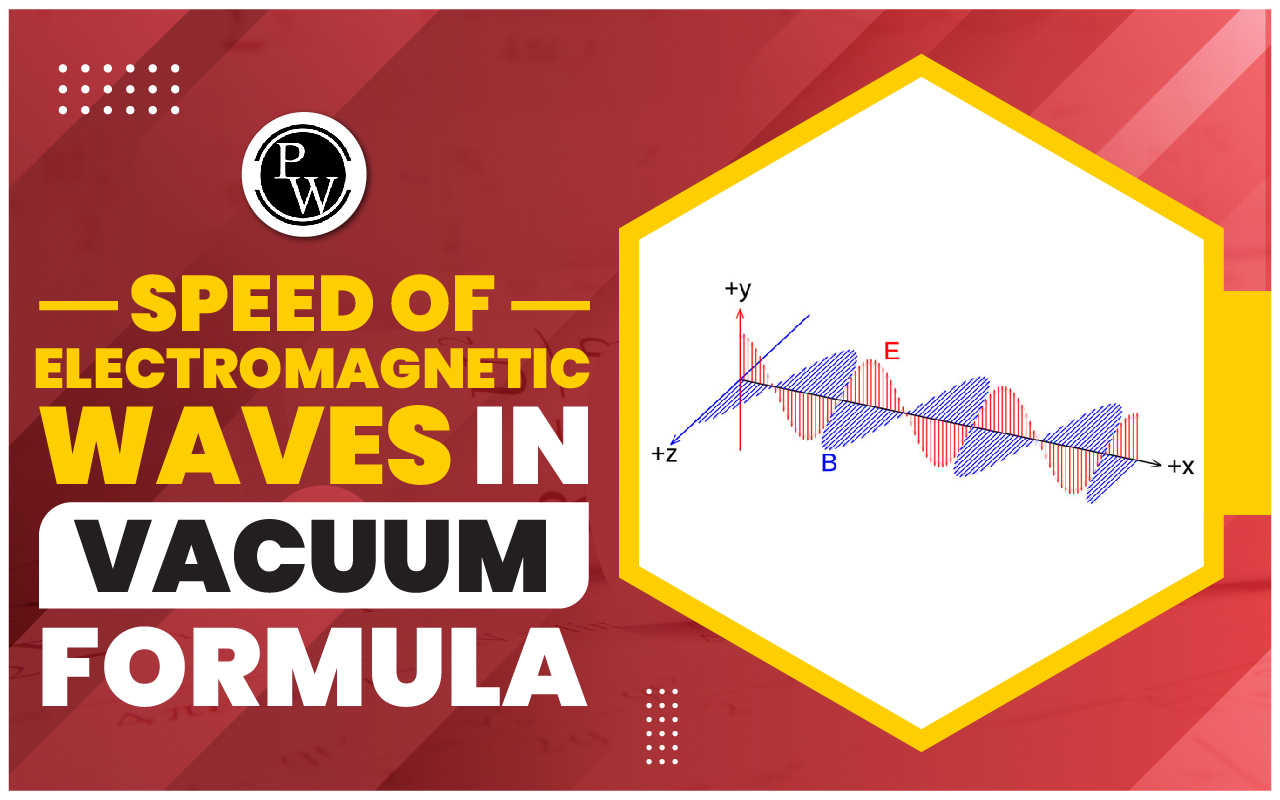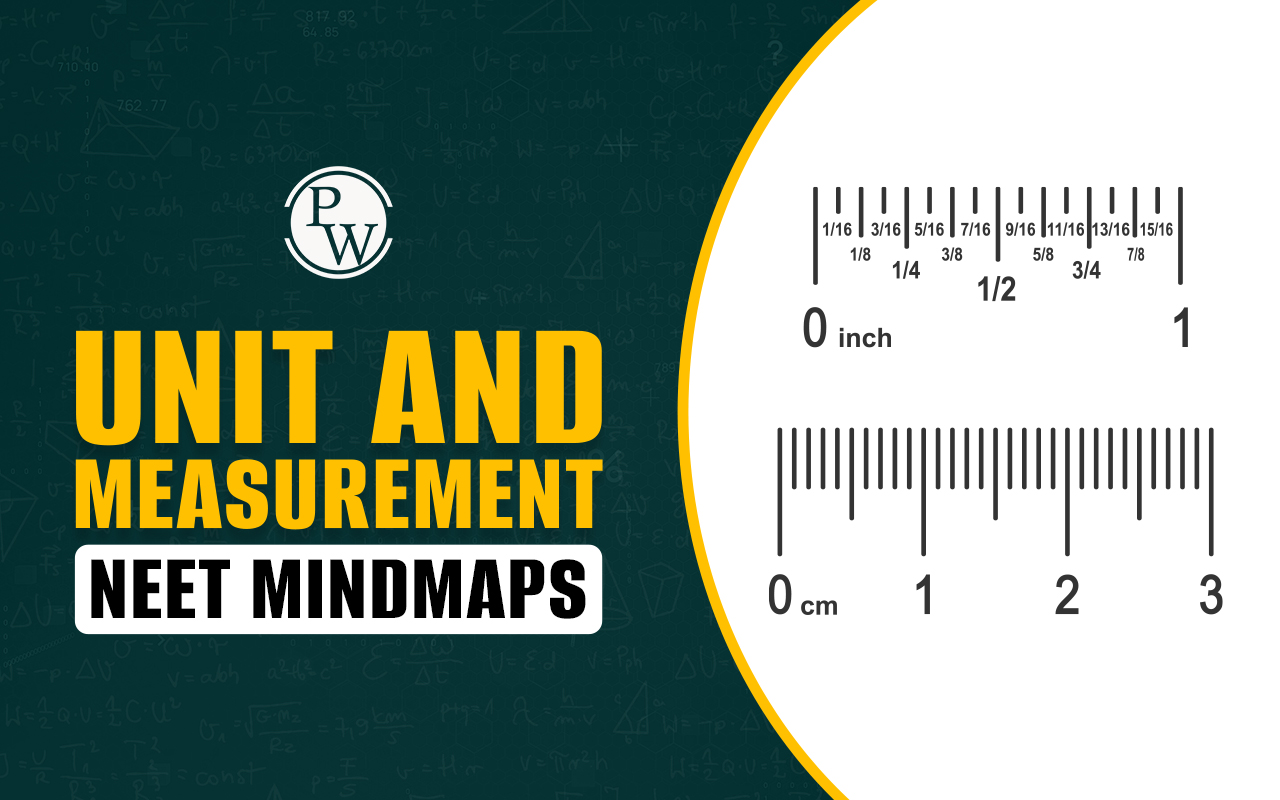
Speed of Electromagnetic Waves in Vacuum Formula : The speed of electromagnetic waves in a vacuum is a fundamental constant denoted by "c," representing the speed of light. With an approximate value of 3.00 x 10^8 meters per second. It is defined by the relationship c = 1/√(ε₀μ₀), where ε₀ is the vacuum permittivity and μ₀ is the vacuum permeability.
If you are aligning your preparation with the NEET 2024 syllabus , the Speed of Electromagnetic Waves in Vacuum Formula is a key topic to be covered.Speed of Electromagnetic Waves in Vacuum Formula
Speed of Electromagnetic Waves in Vacuum Formula underscores the relation between electric and magnetic properties of free space, providing a crucial foundation for understanding the behavior and transmission of electromagnetic waves, which include radio waves, microwaves, infrared radiation, visible light, ultraviolet radiation, X-rays, and gamma rays. Here is the list of key Formula of the Speed of Electromagnetic Waves in a Vacuum, you can check and understand the concept.Wave Number ( )
Represents the spatial frequency of a wave, measured in radians per unit length.is the wave number. is a mathematical constant (approximately 3.14159). is the wavelength of the wave.
Frequency ( )
Indicates the number of oscillations or cycles a wave completes in one second, measured in hertz (Hz)is the frequency. is the angular frequency
Speed of the Wave ( )
Describes the distance traveled by a wave per unit time, determined by the product of wavelength and frequency.is the speed of the wave. is the wavelength. is the frequency
Maxwell’s Equations

Elements in Equations
- E represents the electric field vector.
- B represents the magnetic field vector.
- Q_enc is the total enclosed electric charge.
- ε₀ is the vacuum permittivity.
- dA is a differential area vector.
- dl is a differential path vector.
- Φ_B is the magnetic flux through a surface.
- Φ_E is the electric flux through a surface.
- μ₀ is the vacuum permeability.
- I_enc is the total enclosed current.
- dt represents the time derivative.
Oscillating electric and magnetic field
 The electromagnetic spectrum is typically divided into different regions based on the wavelength or frequency of electromagnetic waves. Here's a table that outlines the various regions of the electromagnetic spectrum:
The electromagnetic spectrum is typically divided into different regions based on the wavelength or frequency of electromagnetic waves. Here's a table that outlines the various regions of the electromagnetic spectrum:
| Electromagnetic Spectrum | |||
|---|---|---|---|
| Region | Wavelength Range (Approximate) | Frequency Range (Approximate) | Characteristics |
| Radio Waves | >1 mm - 100 km | <300 GHz | Used for communication, broadcasting, radar, and navigation. |
| Microwaves | 1 mm - 1 m | 300 GHz - 300 MHz | Used in microwave ovens, satellite communication, and certain types of radar. |
| Infrared | 1 mm - 700 nm | 300 GHz - 430 THz | Felt as heat, used in night-vision devices, remote controls, and infrared imaging. |
| Visible Light | 700 nm - 400 nm | 430 THz - 750 THz | Detectable by the human eye, each color corresponds to a specific wavelength. |
| Ultraviolet | 400 nm - 10 nm | 750 THz - 30 PHz | Causes sunburn, used in disinfection and certain types of material analysis. |
| X-rays | 10 nm - 0.01 nm | 30 PHz - 30 EHz | Used in medical imaging, material testing, and security screening. |
| Gamma Rays | < 0.01 nm | >30 EHz | Generated by nuclear reactions, used in medical imaging and cancer treatment. |
Speed of Electromagnetic Waves in Vacuum Formula FAQs
What is the formula for the speed of electromagnetic wave in a vacuum?
The formula for the speed of electromagnetic waves (c) in a vacuum is given by:
c = 1/√(ε₀μ₀), where ε₀ is the vacuum permittivity, and μ₀ is the vacuum permeability.
What speed do electromagnetic waves have in a vacuum?
Electromagnetic waves travel at a speed of approximately 3.00 x 10^8 meters per second (c) in a vacuum. This speed is a fundamental constant and is the same for all wavelengths and frequencies.
What is the speed of electromagnetic waves in a vacuum vs air?
The speed of electromagnetic waves in a vacuum is the same as in air, given that air is considered a transparent medium for electromagnetic waves. Therefore, the speed of electromagnetic waves remains approximately 3.00 x 10^8 meters per second in both vacuum and air.
What is the formula for the electromagnetic wave?
The general formula describing electromagnetic waves is v = λ * f, where v is the speed of the wave, λ is the wavelength, and f is the frequency. Additionally, the speed of electromagnetic waves in a vacuum is given by c = 1/√(ε₀μ₀).
Which waves has the highest speed in vacuum?
All electromagnetic waves, including radio waves, microwaves, infrared, visible light, ultraviolet, X-rays, and gamma rays, travel at the same speed in a vacuum. They all propagate at the speed of light (c ≈ 3.00 x 10^8 meters per second), making no distinction based on their specific frequencies or wavelengths.
🔥 Trending Blogs
Talk to a counsellorHave doubts? Our support team will be happy to assist you!

Check out these Related Articles
Free Learning Resources
PW Books
Notes (Class 10-12)
PW Study Materials
Notes (Class 6-9)
Ncert Solutions
Govt Exams
Class 6th to 12th Online Courses
Govt Job Exams Courses
UPSC Coaching
Defence Exam Coaching
Gate Exam Coaching
Other Exams
Know about Physics Wallah
Physics Wallah is an Indian edtech platform that provides accessible & comprehensive learning experiences to students from Class 6th to postgraduate level. We also provide extensive NCERT solutions, sample paper, NEET, JEE Mains, BITSAT previous year papers & more such resources to students. Physics Wallah also caters to over 3.5 million registered students and over 78 lakh+ Youtube subscribers with 4.8 rating on its app.
We Stand Out because
We provide students with intensive courses with India’s qualified & experienced faculties & mentors. PW strives to make the learning experience comprehensive and accessible for students of all sections of society. We believe in empowering every single student who couldn't dream of a good career in engineering and medical field earlier.
Our Key Focus Areas
Physics Wallah's main focus is to make the learning experience as economical as possible for all students. With our affordable courses like Lakshya, Udaan and Arjuna and many others, we have been able to provide a platform for lakhs of aspirants. From providing Chemistry, Maths, Physics formula to giving e-books of eminent authors like RD Sharma, RS Aggarwal and Lakhmir Singh, PW focuses on every single student's need for preparation.
What Makes Us Different
Physics Wallah strives to develop a comprehensive pedagogical structure for students, where they get a state-of-the-art learning experience with study material and resources. Apart from catering students preparing for JEE Mains and NEET, PW also provides study material for each state board like Uttar Pradesh, Bihar, and others
Copyright © 2025 Physicswallah Limited All rights reserved.










